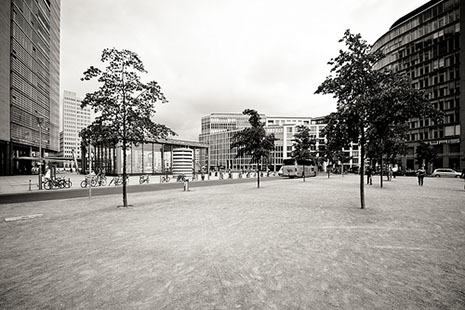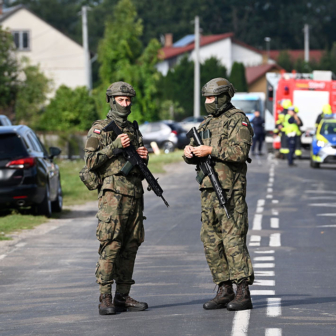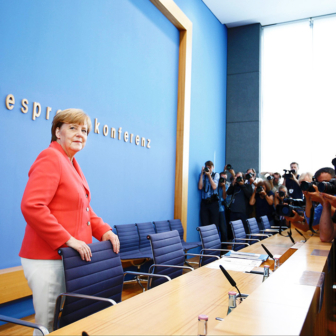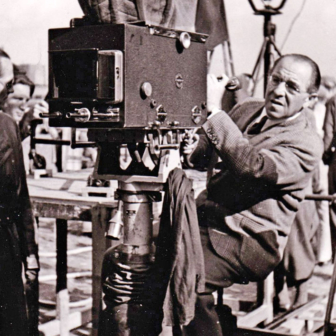Opening an exhibition on the rebuilding of Potsdamer Platz in 2001, Paul Keating declared that Berlin “would have been better left in ruin” after the second world war. The war and all that led up to it had “belted the soul out of” the city, he said, and Berlin “has been gasping ever since.” It was an audacious viewpoint, and one that expressed much more than an opinion about the architecture of the new building.
The speech, delivered at the Sydney Festival, was recently published in a collection of Keating’s post–prime ministerial speeches, After Words. Just a few weeks ago, in an interview with Phillip Adams on ABC Radio National, Keating restated his belief that Berlin should not have been rebuilt but “left as an example of what not to do as a state.”
Perhaps all this was true when Keating wrote his speech, but it isn’t true now.
It’s questionable whether Berlin, had it been left in ruins, would have offered a more powerful example “of what not to do as a state” than the city does today. Museums like the Topography of Terror, built on the site that was occupied by the head offices of the SS, the Reich Security and the Gestapo, remind visitors of how the Nazi regime perverted the instruments of the state to fulfil its objectives. The very configuration of Berlin’s modern government buildings represents a repudiation of Hitler’s pretensions to world domination. Then there are the Stolpersteine, the golden cobbles that “trip you up” whenever you walk past the entrance of a building whose occupants were forced to leave.
When people travel to Berlin to reflect on the horrors of Nazi Germany, they need to be reassured that the city – and by extension Germany – has learnt from its past. Nobody visiting a ruin of a city could leave with this conviction. But visitors to Berlin as it is today just might.
As I walk the streets of Berlin, where I’ve lived for a year, I often wonder what my grandfather would think of my being here. When he was a young boy his family sent him, alone, on a ship to Australia. Hitler had just come to power. That his grandson should be able to walk freely through the streets of the German capital never fails to move me.
I’ve grown deeply fond of Berlin. More than that, I’ve come to respect it. Keating suggested that Australians, with reference to Aboriginality, might think of Berlin as an “unsacred site.” Yet the city has done so much to make amends for the horrors of its past. There must be few places on earth that bare their scars and hideous tattoos in the way Berlin does. The city has a lot to teach the world about how history can inform the present.
Keating was right, in my opinion, to be disappointed by the design of Potsdamer Platz. It demonstrated, he said, “how impossible it is to recreate organic human scale precincts at a single stroke, especially when commercial imperatives demand that developments be so grand and so dense.” But by this, he meant not just Potsdamer Platz, but the whole city itself.
It’s true that Berlin’s super-human scale can be alienating. Walking along the Unter den Linden, I have at times felt completely separate from the cityscape, like a little plastic figure stuck to the footpath of a model city. It’s so unlike the ambiance of the streets of those “organic” cities that Keating admires, where people are as much a part of the streetscape as the buildings themselves.
But Berlin is more than its architecture. And Berliners live their lives in a way that’s not possible in any other place I know. Berliners own their own lives. In cities like Sydney, I feel that many people are owned by their jobs and their mortgages. Perhaps it’s Berlin’s history that allows its residents to put material well-being into perspective.
It’s almost certainly this history that drives the city council to build a city for its people. When the decision was made to close Tempelhof – the airport that had served not only Hitler but also the American pilots of the Berlin Airlift – the city council declared it a park rather than turning the immense tract of land over to developers. It is now filled with rollerbladers and cyclists.
Above all, Berlin is a city of culture. Billboards at Berlin’s main station make the understated claim that the city offers more than politics. Friedrichstraße, one of Berlin’s main streets, is no doubt, as Keating put it, a “cold copy of its old self.” But it says a lot for Berlin that one of the largest buildings on Friedrichstraße is occupied entirely by... a bookstore.
In his interview with Adams, Keating quoted Pope Benedict’s comment that the West had become “bored of its own culture.” I don’t believe that’s true in Berlin. Western culture is very much alive there. Berliners and tourists, young and old, turn out in sufficient numbers to fill two concert houses and three “mainstream” opera and ballet venues most nights of the week. It’s exciting, and it’s only the surface of a much denser underground of art and culture.
Berliners don’t need to engage in the kind of debate over whether what they see on their stages is relevant that we have had recently in Australia. Perhaps it’s the memory of recent history that would make the question seem absurdly irrelevant.
Berlin’s reconstruction has given rise to one of the most cosmopolitan cities in the world. Students from all over Europe and Asia are flocking there. They come not only to study the culture on offer, but also to pursue their own art. Berlin’s cost of living makes it possible for students and artists to create.
One of Berlin’s most impressive monuments must be the Holocaust Memorial. Located just to the south of the Brandenburg Gate, its dark grey concrete stelae, or blocks, stand on a deliberately wavy surface. The ground gives way and the height of the blocks increases towards the centre of the maze. People appear, then disappear, behind the columns. It’s especially unsettling at night.
The Holocaust Memorial is very popular with tourists, and there are always a few adolescents who, rather than explore the depths of the monument, take to the sky and spring from one stele to the next. It could be construed as disrespectful to the victims, but a part of me also feels that those kids have, intuitively, understood the very sentiment at the core of the monument. If only those millions of people could have sprung over the pillars of the Nazi regime, defying the laws that restricted their movement and the weight of a perverted state apparatus that sealed their fate.
Those leaps strike me as symbolic of what Berlin has become, a city built on its past but springing, sometimes cautiously, sometimes gleefully, above the weight of history.
Keating included his speech on Berlin in his After Words. I hope it won’t be the last word on the subject from the prime minister who was so committed to bringing Australia face to face with its past in order to build a brighter future for all of its citizens. •




